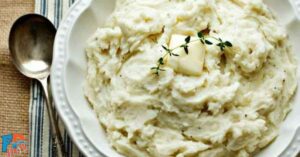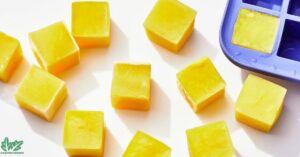In the world of pizza, innovation never stops. One delightful twist that’s been gaining popularity is the cornmeal pizza crust. This unique take on the traditional pizza base offers a delightful crunch and a subtle, nutty flavor that’s winning over pizza lovers everywhere.
As we dive into the world of cornmeal pizza crust in 2024, let’s explore what makes this variation so special and how you can master it in your own kitchen.
What is Cornmeal Pizza Crust?
The Basics of Cornmeal Pizza Crust
Cornmeal pizza crust is a delightful variation of the classic pizza dough that incorporates cornmeal into the mix. This addition transforms the texture and flavor profile of the crust, creating a pizza experience that’s both familiar and excitingly new.
The origins of cornmeal pizza crust can be traced back to various regional cuisines, particularly in areas where corn is a staple grain. It’s a testament to the versatility of pizza as a dish, adapting to local ingredients and tastes.
The key difference between a cornmeal pizza crust and a traditional one lies in its composition. While a standard pizza dough relies solely on wheat flour, the cornmeal version introduces a coarser, grainier element.
This not only affects the texture but also imparts a subtle, sweet corn flavor that complements a wide range of toppings.
Why Choose Cornmeal for Pizza Crust?
The benefits of using cornmeal in pizza crust extend beyond just novelty. The cornmeal adds a delightful crunch to the crust, creating a textural contrast that many find irresistible. This crispiness is particularly noticeable around the edges of the pizza, where the cornmeal forms a golden, crunchy rim.
From a nutritional standpoint, cornmeal brings its own set of benefits to the table. It’s a good source of fiber and contains essential minerals like iron and magnesium. For those looking to diversify their grain intake, cornmeal pizza crust offers a tasty way to do so without straying too far from a beloved dish.
The Science Behind Cornmeal Pizza Crust
Cornmeal vs. Regular Flour in Pizza Dough
To truly appreciate cornmeal pizza crust, it’s worth understanding how it differs from regular pizza dough at a molecular level. Wheat flour, the primary ingredient in traditional pizza dough, is rich in gluten-forming proteins.
These proteins create the stretchy, elastic texture we associate with pizza dough. Cornmeal, on the other hand, is gluten-free and has a different protein structure.
When cornmeal is incorporated into pizza dough, it introduces starch granules that behave differently from wheat starch.
These granules absorb water more slowly and to a lesser extent than wheat flour. As a result, cornmeal pizza crust tends to have a drier, more crumbly texture compared to its all-wheat counterpart.
The Role of Gluten in Cornmeal Pizza Crust
The reduced gluten content in cornmeal pizza crust significantly impacts the dough’s structure and behavior. Gluten is responsible for the stretchy, elastic quality of traditional pizza dough.
With less gluten in the mix, cornmeal pizza crust is typically less elastic and more prone to breaking. This isn’t necessarily a disadvantage – it’s part of what gives cornmeal crust its unique texture.
However, most cornmeal pizza crust recipes still include some wheat flour to provide enough gluten for structure. The balance between cornmeal and wheat flour is crucial in achieving the desired texture – too much cornmeal can result in a crust that’s too crumbly, while too little won’t provide the characteristic cornmeal crunch.
Crafting the Perfect Cornmeal Pizza Crust Recipe
Essential Ingredients for Cornmeal Pizza Crust
Creating the perfect cornmeal pizza crust starts with gathering the right ingredients. Here’s what you’ll need:
- Cornmeal: The star of the show, providing texture and flavor.
- All-purpose flour: To provide structure and gluten.
- Yeast: For leavening the dough.
- Warm water: To activate the yeast and hydrate the dough.
- Salt: To enhance flavor.
- Olive oil: For richness and to help crisp the crust.
- Sugar (optional): To feed the yeast and add a touch of sweetness.
The quality of your cornmeal can make a significant difference. Look for finely ground cornmeal for a more integrated texture, or use medium-grind for more pronounced corn flavor and texture.
Step-by-Step Cornmeal Pizza Dough Recipe
Now, let’s walk through the process of making cornmeal pizza dough:
- In a large bowl, combine 1 cup of warm water with 1 teaspoon of sugar and 2 1/4 teaspoons of active dry yeast. Let it sit for about 5 minutes until frothy.
- In another bowl, mix 1 1/2 cups of all-purpose flour, 1 cup of cornmeal, and 1 teaspoon of salt.
- Add 2 tablespoons of olive oil to the yeast mixture, then gradually stir in the dry ingredients.
- Knead the dough on a floured surface for about 8-10 minutes until smooth and elastic.
- Place the dough in an oiled bowl, cover, and let it rise in a warm place for about an hour, or until doubled in size.
- Punch down the dough, shape it into a ball, and let it rest for another 10 minutes before rolling out and topping as desired.
Tips for Kneading and Resting Cornmeal Pizza Dough
Kneading cornmeal pizza dough requires a slightly different approach compared to traditional dough. The cornmeal makes the dough less elastic, so be gentle but firm.
You’re aiming for a smooth, slightly tacky texture. If the dough feels too dry, add water a tablespoon at a time. If it’s too wet, add flour gradually.
Resting is crucial for cornmeal pizza dough. The initial rise allows the yeast to create air bubbles, contributing to a lighter texture.
The second short rest after punching down the dough allows the gluten to relax, making it easier to shape. Don’t skip these steps – they’re key to achieving the perfect texture in your cornmeal pizza crust.
Variations in Cornmeal Pizza Crust Recipes
Thin vs. Thick Cornmeal Pizza Crust
The beauty of cornmeal pizza crust lies in its versatility. You can adapt the recipe to create either a thin, crispy crust or a thicker, more substantial base. For a thin crust, roll the dough out to about 1/8 inch thickness.
This style results in a crust that’s crispy throughout, with a satisfying crunch in every bite. It’s perfect for those who prefer their pizza light and crisp.
On the other hand, a thick cornmeal pizza crust, rolled to about 1/4 inch or more, offers a different experience.
The outer edge becomes wonderfully crunchy, while the interior remains slightly chewy. This style is great for those who enjoy a more substantial crust and works well with heartier toppings.
Adding Herbs and Spices to Cornmeal Pizza Crust
One of the joys of making cornmeal pizza crust at home is the ability to customize it to your taste. Adding herbs and spices to the dough can elevate your pizza to new heights of flavor. Here are some popular additions:
- Dried oregano or basil for a classic Italian touch
- Garlic powder for a savory kick
- Red pepper flakes for heat
- Rosemary for an aromatic, earthy flavor
When adding herbs and spices, incorporate them into the dry ingredients before mixing with the wet ingredients. This ensures even distribution throughout the dough.
Start with about 1 teaspoon of dried herbs or spices per cup of flour/cornmeal mix, and adjust to your taste.
Gluten-Free Cornmeal Pizza Crust Options
For those with gluten sensitivities or celiac disease, it’s possible to create a delicious gluten-free cornmeal pizza crust. The key is to replace the wheat flour with a gluten-free alternative. A blend of rice flour, tapioca starch, and xanthan gum can work well. Here’s a simple recipe:
- 1 cup cornmeal
- 1 cup rice flour
- 1/2 cup tapioca starch
- 1 teaspoon xanthan gum
- 1 teaspoon salt
- 2 1/4 teaspoons active dry yeast
- 1 cup warm water
- 2 tablespoons olive oil
Follow the same mixing and kneading process as with the standard recipe. Note that gluten-free dough won’t have the same elasticity, so handle it gently and consider using parchment paper for easier transfer to the baking surface.
Sizing Your Cornmeal Pizza Crust
Standard Pizza Sizes and Their Cornmeal Crust Requirements
When it comes to sizing your cornmeal pizza crust, the standard sizes used for traditional pizzas apply. Here’s a quick guide to help you adjust your recipe:
| Pizza Size | Dough Weight | Cornmeal Crust Thickness |
| 10-inch | 8-10 oz | 1/8 – 1/4 inch |
| 12-inch | 10-12 oz | 1/8 – 1/4 inch |
| 14-inch | 12-14 oz | 1/8 – 1/4 inch |
| 16-inch | 14-16 oz | 1/8 – 1/4 inch |
Remember, these are guidelines. You may need to adjust based on your preference for crust thickness and the specific characteristics of your cornmeal pizza dough.
Making Personal-Sized Cornmeal Pizza Crusts
Personal-sized pizzas are a fun way to let everyone customize their own meal. For cornmeal pizza crust, aim for about 4-6 ounces of dough per personal pizza.
This will give you a crust about 6-8 inches in diameter. The beauty of personal pizzas is that you can easily vary the thickness to suit individual preferences.
Large Party-Sized Cornmeal Pizza Crusts
For big gatherings, you might want to go extra large with your cornmeal pizza crust. A 18-inch pizza typically requires about 18-20 ounces of dough.
When scaling up your recipe, it’s crucial to maintain the right ratio of ingredients. Simply doubling or tripling the recipe should work well, but you might need to adjust the kneading time slightly.
Remember, larger pizzas can be trickier to handle and transfer. Consider using a pizza peel dusted with extra cornmeal to slide the pizza onto your baking surface.
Achieving the Perfect Texture in Cornmeal Pizza Crust
Factors Affecting Cornmeal Pizza Crust Texture
The texture of your cornmeal pizza crust is influenced by several factors. Understanding these can help you achieve the perfect crust every time:
- Hydration: The ratio of liquid to dry ingredients affects how crispy or chewy your crust will be. More water generally leads to a chewier crust, while less water results in a crispier texture.
- Baking temperature: Higher temperatures typically yield a crispier exterior and a softer interior. Most home ovens can’t reach the extreme temperatures of professional pizza ovens, so you might need to experiment to find the sweet spot.
- Cooking surface: A pizza stone or steel can help achieve a crispier bottom crust by conducting heat more efficiently than a regular baking sheet.
- Cornmeal to flour ratio: More cornmeal will result in a crumblier, more textured crust, while more flour will create a smoother, more traditional pizza crust texture.
Techniques for Extra-Crispy Cornmeal Pizza Crust
If you’re aiming for an ultra-crispy cornmeal pizza crust, try these techniques:
- Parbake the crust: Bake the crust for a few minutes before adding toppings. This helps create a barrier against moisture from the sauce and toppings.
- Use a pizza stone: Preheat your pizza stone in the oven for at least 30 minutes before baking. This ensures a hot surface that will immediately start crisping the bottom of your crust.
- Brush with olive oil: Before adding toppings, lightly brush the crust with olive oil. This helps create a golden, crispy exterior.
- Increase cornmeal ratio: A higher proportion of cornmeal in your dough will naturally result in a crispier crust.
Balancing Crunch and Chewiness in Cornmeal Pizza Crust
Finding the perfect balance between crunch and chewiness in your cornmeal pizza crust might take some experimentation. Here are some tips:
- Adjust hydration: For a chewier crust, increase the water in your recipe slightly. For more crunch, reduce it.
- Play with thickness: A thinner crust will be crispier throughout, while a thicker crust can give you a crisp exterior and a chewier interior.
- Consider baking time and temperature: A longer bake at a slightly lower temperature can help develop both crunch and chewiness.
- Let it rest: Allowing your dough to rest and rise properly helps develop gluten, contributing to a balance of textures.
Remember, the perfect texture is subjective. Some prefer an ultra-crispy crust, while others enjoy a bit more chew. Don’t be afraid to adjust your recipe and technique until you find your ideal cornmeal pizza crust.
Baking Methods for Cornmeal Pizza Crust
Oven-Baking Cornmeal Pizza Crust
Oven-baking is the most common method for cooking cornmeal pizza crust at home. To achieve the best results, preheat your oven to its highest setting, usually around 450-500°F (230-260°C). If you have a pizza stone, place it in the oven during preheating to ensure it’s thoroughly heated.
When your oven is ready, carefully transfer your topped cornmeal pizza onto the hot stone or a preheated baking sheet.
Bake for about 12-15 minutes, or until the crust is golden brown and the cheese is bubbly. The high heat helps create that desirable crispy exterior while keeping the inside tender.
Pro tip: For an extra crispy bottom, you can slide the pizza directly onto the oven rack for the last minute or two of baking. Just keep a close eye on it to prevent burning!
Grilling Cornmeal Pizza Crust
Grilling adds a delightful smoky flavor to cornmeal pizza crust, making it perfect for summer cookouts. Here’s how to do it:
- Preheat your grill to medium-high heat.
- Brush one side of your rolled-out cornmeal pizza dough with olive oil.
- Place the oiled side down on the grill and cook for about 2-3 minutes, or until grill marks appear.
- Brush the top side with oil, flip the crust, and quickly add your toppings.
- Close the grill lid and cook for another 3-5 minutes, or until the cheese melts and the bottom is crispy.
The intense heat of the grill creates a wonderfully crispy crust with those coveted charred spots that add depth of flavor.
Using a Pizza Stone with Cornmeal Pizza Crust
A pizza stone is a game-changer when it comes to baking cornmeal pizza crust. This heavy, flat stone absorbs and distributes heat evenly, mimicking the effect of a brick oven. Here’s how to use it effectively:
- Place the pizza stone in a cold oven and preheat to 500°F (260°C) for at least 30 minutes.
- Dust a pizza peel with cornmeal and place your topped pizza on it.
- Carefully slide the pizza onto the hot stone in the oven.
- Bake for 10-12 minutes, or until the crust is golden and crispy.
The pizza stone’s ability to maintain high heat ensures that your cornmeal pizza crust gets that perfect crispy bottom while the toppings cook evenly.
Read This Blog : Can Too Much Wet Food Cause Diarrhea In Cats?
Toppings that Complement Cornmeal Pizza Crust
Classic Toppings for Cornmeal Pizza Crust
While cornmeal pizza crust works well with a wide variety of toppings, some classic combinations particularly complement its unique texture and flavor:
- Margherita: The simplicity of fresh mozzarella, tomatoes, and basil allows the cornmeal flavor to shine through.
- Pepperoni and mushroom: The savory, spicy pepperoni pairs wonderfully with the slight sweetness of the cornmeal.
- Four cheese: A blend of mozzarella, parmesan, gorgonzola, and fontina creates a rich, creamy contrast to the crunchy crust.
Remember, the cornmeal adds its own flavor to the pizza, so consider how your toppings will interact with this slightly sweet, nutty base.
Gourmet Toppings to Elevate Cornmeal Pizza Crust
For those looking to create a more upscale pizza experience, consider these gourmet topping ideas that pair beautifully with cornmeal pizza crust:
- Fig and prosciutto: The sweetness of fresh figs complements the cornmeal, while prosciutto adds a salty contrast.
- Goat cheese and caramelized onions: The tangy goat cheese and sweet onions create a beautiful flavor profile against the cornmeal backdrop.
- Roasted butternut squash and sage: This autumnal combination brings out the earthy notes in the cornmeal crust.
When experimenting with gourmet toppings, remember that less is often more. Let each carefully chosen ingredient shine without overwhelming the unique flavor of your cornmeal crust.
Vegetarian and Vegan Options for Cornmeal Pizza Crust
Cornmeal pizza crust is naturally vegetarian, making it a great base for plant-based pizzas. Here are some delicious vegetarian and vegan topping ideas:
- Roasted vegetables: A medley of bell peppers, zucchini, and eggplant brings color and nutrition to your pizza.
- Vegan pesto and cherry tomatoes: Spread a layer of dairy-free pesto and top with halved cherry tomatoes for a fresh, herby pizza.
- BBQ jackfruit: For a meaty texture without the meat, try pulled jackfruit in BBQ sauce.
For vegan pizzas, you can use dairy-free cheese alternatives or skip the cheese altogether, letting the vegetables and sauces take center stage.
Also Read This Blog: Can Dogs Eat Peanut Butter and Jelly Sandwiches?
Storing and Reheating Cornmeal Pizza Crust
Proper Storage Methods for Cornmeal Pizza Crust
To maintain the quality of your cornmeal pizza crust, proper storage is key. If you have leftover baked pizza, allow it to cool completely before storing.
Place the slices in an airtight container or wrap tightly in aluminum foil. Stored this way in the refrigerator, your pizza will stay fresh for 3-4 days.
For unbaked dough, you have two options:
- Refrigeration: Wrap the dough tightly in plastic wrap and store in the fridge for up to 2 days. Let it come to room temperature before using.
- Freezing: Wrap the dough in plastic wrap, then in aluminum foil, and freeze for up to 3 months. Thaw overnight in the refrigerator before use.
Best Practices for Reheating Cornmeal Pizza Crust
Reheating cornmeal pizza crust requires care to maintain its crispy texture. Here are some effective methods:
- Oven method: Preheat your oven to 375°F (190°C). Place the pizza on a baking sheet and reheat for about 10 minutes, or until the cheese is melted and the crust is crispy.
- Skillet method: Heat a skillet over medium heat. Place the pizza in the skillet, cover with a lid, and heat for about 5 minutes. This method helps recreate a crispy bottom.
- Air fryer method: If you have an air fryer, it’s great for reheating pizza. Set it to 360°F (180°C) and heat for 3-4 minutes for crispy results.
Avoid using the microwave, as it can make the crust soggy.
Freezing and Thawing Cornmeal Pizza Dough
Freezing cornmeal pizza dough is a great way to have homemade pizza on demand. Here’s how to do it properly:
- After the first rise, divide the dough into individual portions.
- Shape each portion into a ball and wrap tightly in plastic wrap.
- Place the wrapped dough balls in a freezer bag, removing as much air as possible.
- Label with the date and freeze for up to 3 months.
To thaw, transfer the frozen dough to the refrigerator the night before you plan to use it. Let it come to room temperature for about 30 minutes before shaping and baking.
By mastering these storage and reheating techniques, you can enjoy the unique taste and texture of cornmeal pizza crust anytime, even when you don’t have time to make it from scratch.
Frequently Asked Question
Is cornmeal good for pizza crust?
Yes, cornmeal is excellent for pizza crust. It adds a delightful crunch and a subtle, sweet flavor that complements various toppings. Cornmeal also helps prevent the dough from sticking to the baking surface and contributes to a golden-brown color.
Do Italians use cornmeal on their pizza?
Traditional Italian pizzas typically don’t use cornmeal in the crust or as a dusting agent. Italians generally prefer a simple wheat flour dough.
However, some regions in Italy do incorporate cornmeal in their bread-making traditions, which has influenced certain pizza styles outside of Italy.
Does Dominos use cornmeal?
Domino’s doesn’t use cornmeal in their standard pizza crust recipe. Their traditional crust is made primarily with wheat flour. However, they may use a small amount of cornmeal on the baking surface to prevent sticking, but this isn’t a significant part of their crust recipe or flavor profile.
Is cornmeal semolina?
No, cornmeal and semolina are different products. Cornmeal is made from ground corn kernels, while semolina is made from durum wheat.
They have different textures, flavors, and baking properties. Semolina is often used in pasta-making, while cornmeal is more common in bread and polenta.
Does cornmeal burn in a pizza oven?
Cornmeal can burn in a pizza oven if exposed to very high temperatures for too long. However, when used properly (as a light dusting on the baking surface), it generally toasts and becomes crispy rather than burning.
The key is to use just enough cornmeal to prevent sticking without excess that might burn.
Is cornmeal healthier than flour?
Cornmeal and flour have different nutritional profiles, and whether one is “healthier” depends on individual dietary needs.
Cornmeal is gluten-free and contains more fiber and certain minerals than wheat flour. However, wheat flour is often enriched with vitamins and minerals. Both can be part of a healthy diet when consumed in moderation.
Conclusion
Cornmeal pizza crust offers a delightful twist on traditional pizza, bringing a unique texture and flavor to this beloved dish.
Whether you’re a seasoned pizza maker or a curious beginner, experimenting with cornmeal in your crust can open up a world of new pizza possibilities.
From its crispy texture to its subtle sweetness, cornmeal pizza crust is sure to become a favorite in your recipe repertoire. So why not give it a try? Your taste buds will thank you!











